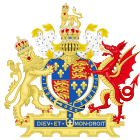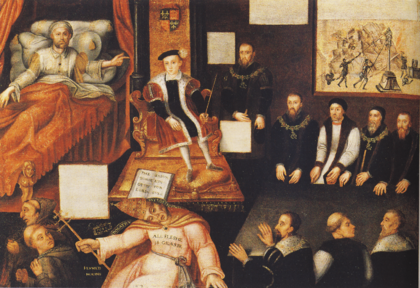Putting away of Books and Images Act 1549
Quick facts for kids Act of Parliament |
|

|
|
| Long title | An Acte for the abolishing and putting away of dives Bookes and Images. |
|---|---|
| Citation | 3 & 4 Edw. 6. c. 10 |

The Act for the abolishing and putting away of diverse books and images 1549 was an important law made by the Parliament of England in 1549. This law aimed to change how people practiced their religion in England. It was part of a bigger movement called the English Reformation, which changed the Church in England.
This Act was passed during the reign of young King Edward VI. He was a strong supporter of the Protestant faith. The law helped to make religious practices more uniform across England.
Contents
What the Act Was About
This law was created to support a new prayer book. This book was called The Booke of Common Prayer and Admynistracion of the Sacramentes and other Rytes and Ceremonyes of the Churche after the Churche of England. The King and Parliament wanted everyone in England to use this new book.
The new prayer book was meant to bring a "uniform, quiet, and godly order" to church services. It was designed to be simpler and more in line with the early Christian Church. The Act stated that this book contained only "the very pure word of God."
Removing Old Religious Items
The Act ordered that all other religious books be removed. These old books were thought to encourage superstition and idolatry. Superstition means believing in things that are not based on reason or science. Idolatry means worshipping images or objects instead of God.
The law also commanded people to deface and destroy images used for religious worship. This meant breaking or damaging statues, paintings, and other religious art. Anyone who tried to stop this destruction could be punished. This act of destroying religious images is known as iconoclasm.
Exceptions for Tomb Monuments
Even though the Act was strict, it did have some exceptions. It said that the law did not apply to images or pictures found on tomb monuments. These were statues or carvings on graves in churches or churchyards.
These images were allowed to stay if they were only there to remember a dead person. This included kings, princes, noblemen, or other important people. The rule was that these images should not have been commonly seen as saints.
Rules for Prayer Books
The Act also mentioned older prayer books called "primers." These were small books used for daily prayers. People were allowed to keep primers that had been approved by the late King Henry VIII.
However, they had to make a change to these books. They had to erase any parts that asked for help from saints. They also had to remove the names of "popish" saints. "Popish" was a term used to describe things related to the Pope or the Roman Catholic Church.
History of the Act
The Act was later cancelled by Mary I. She was a Catholic queen who tried to bring back the old religious ways. However, the Act was brought back into law by King James I. This shows how religious laws changed often during this time in England's history.
See also

